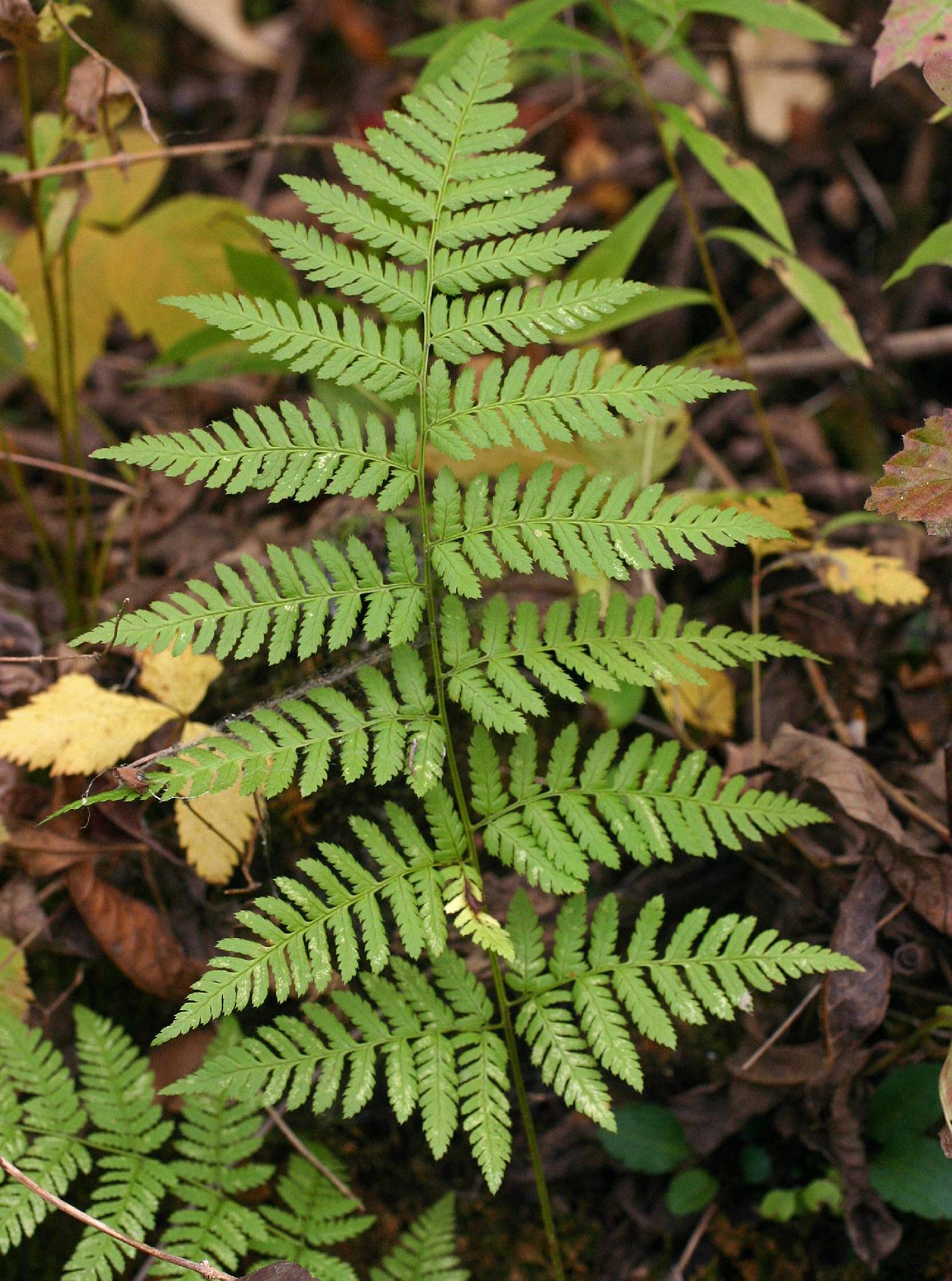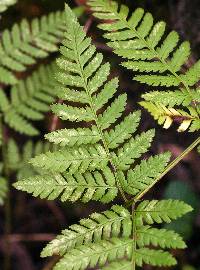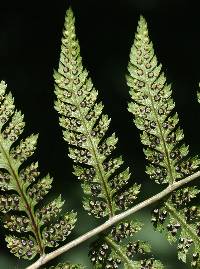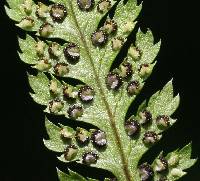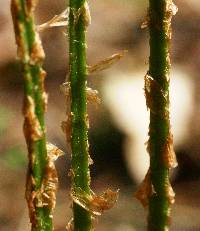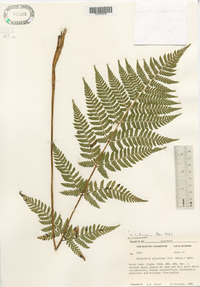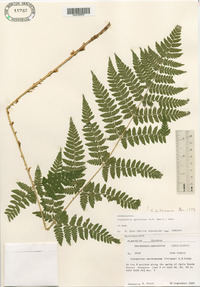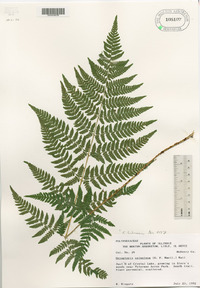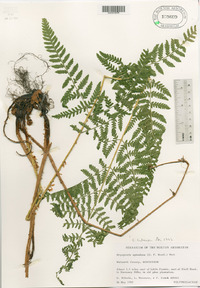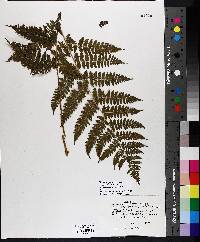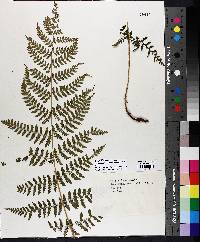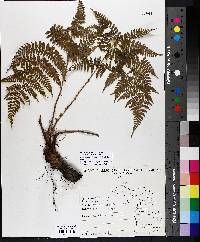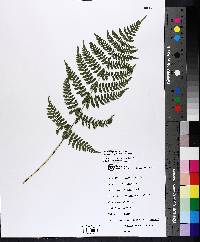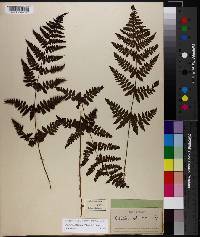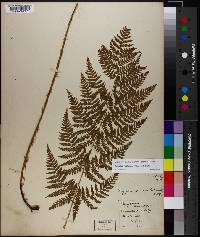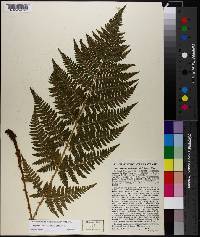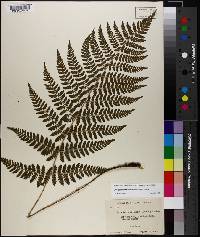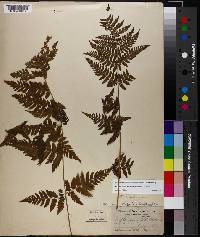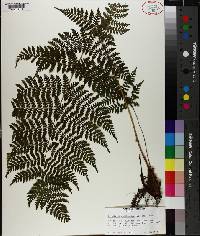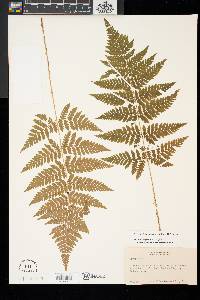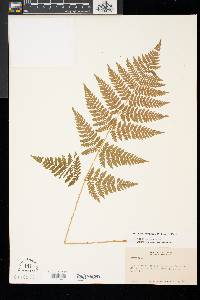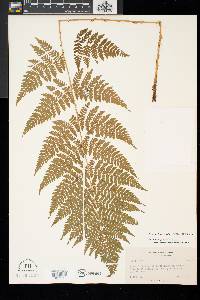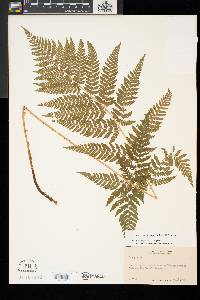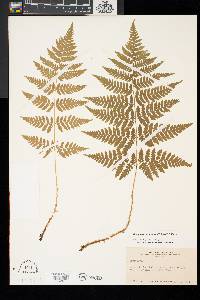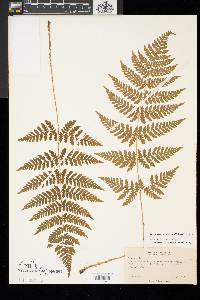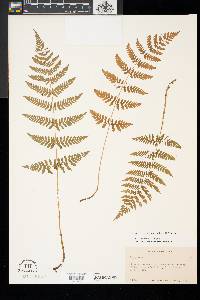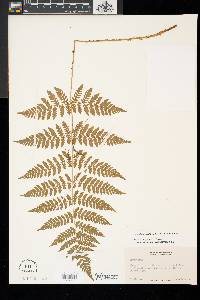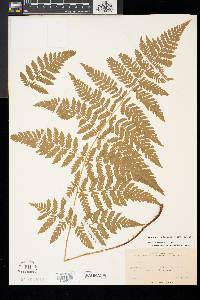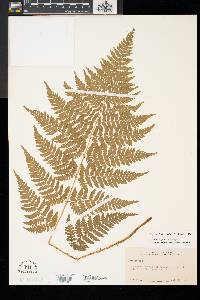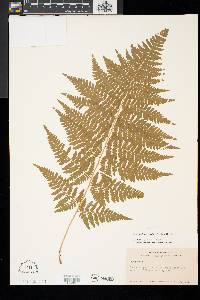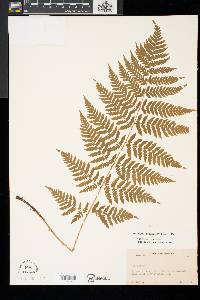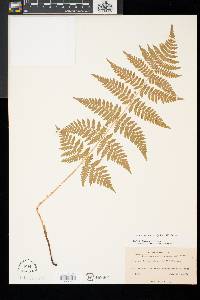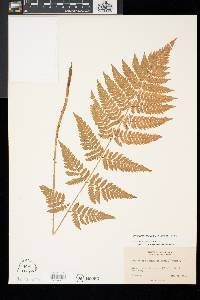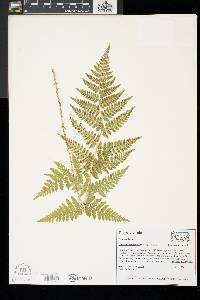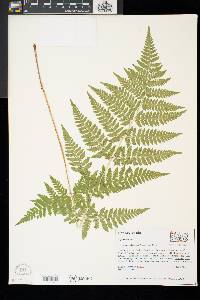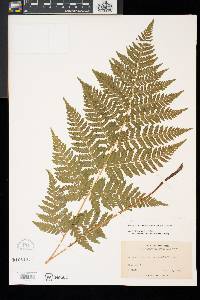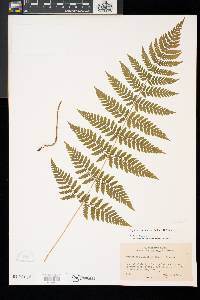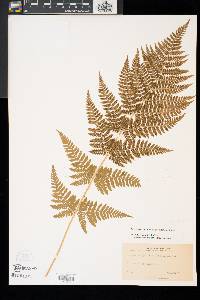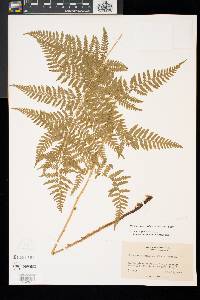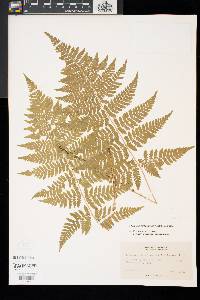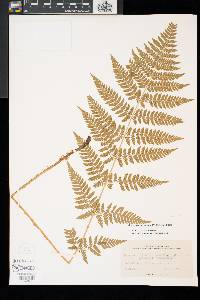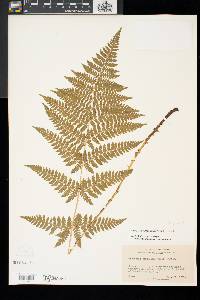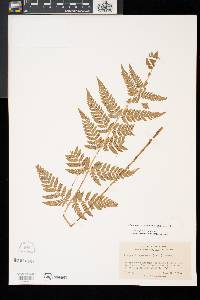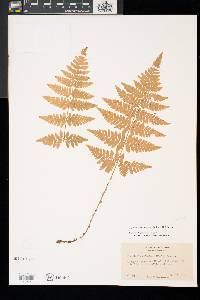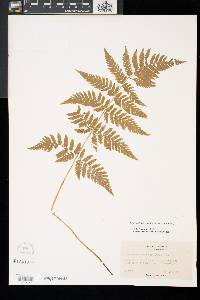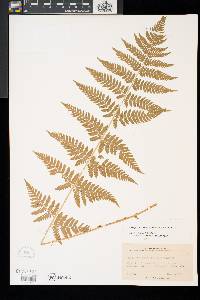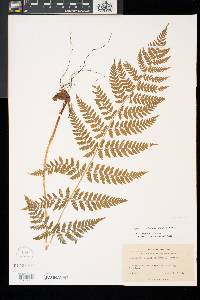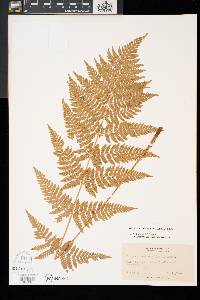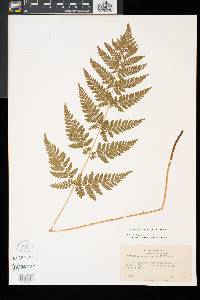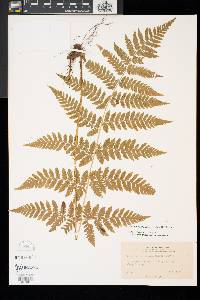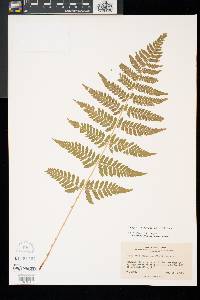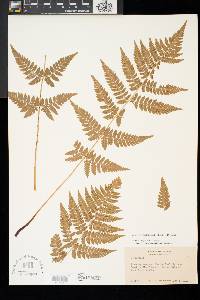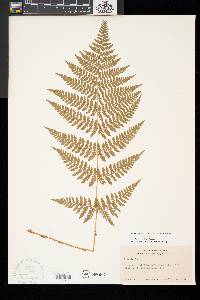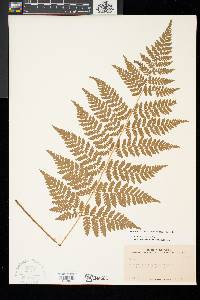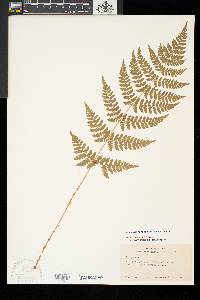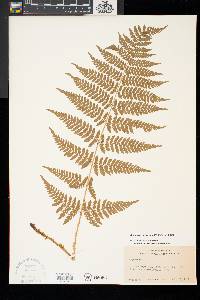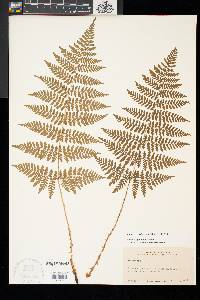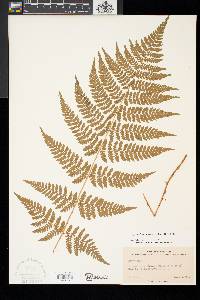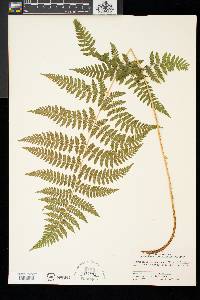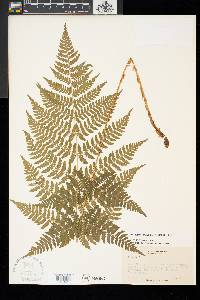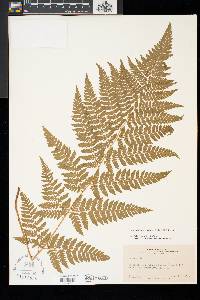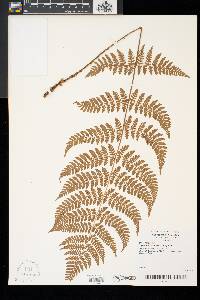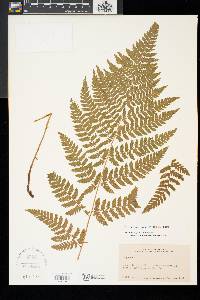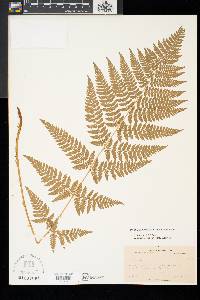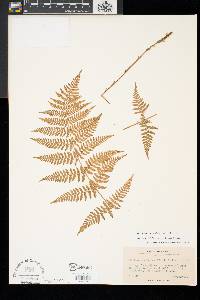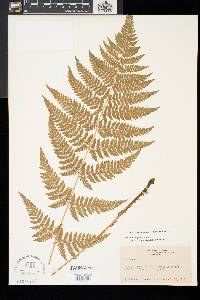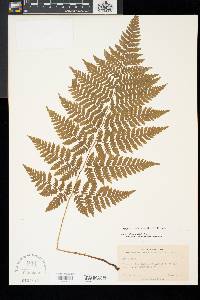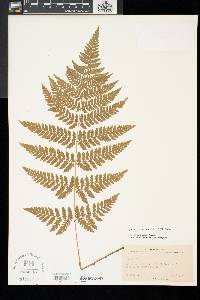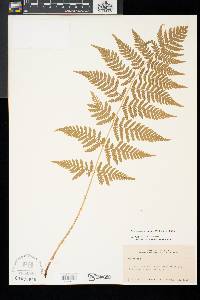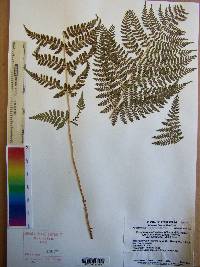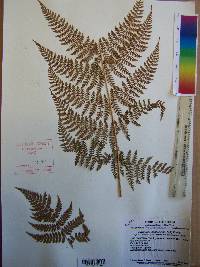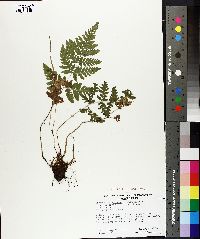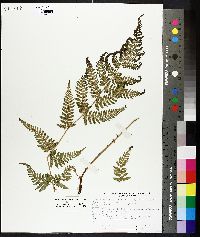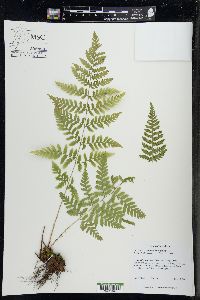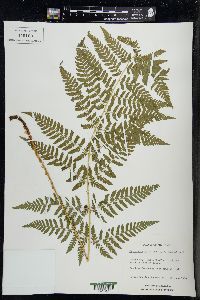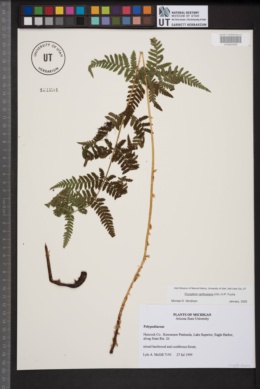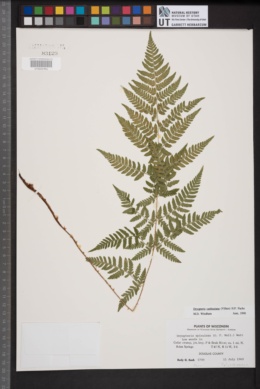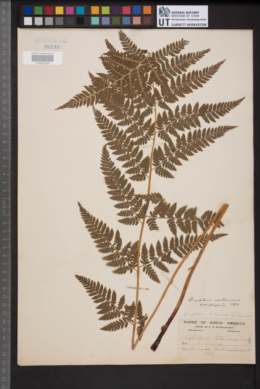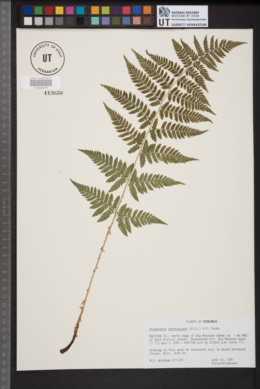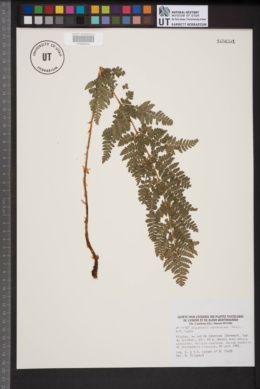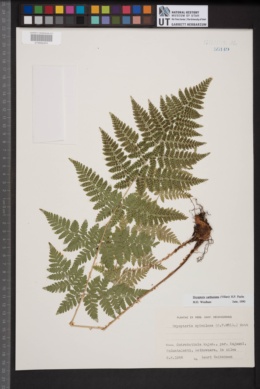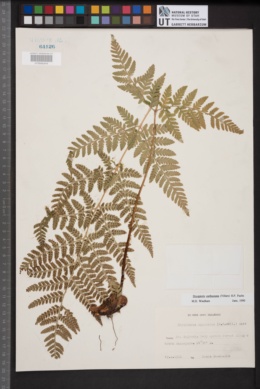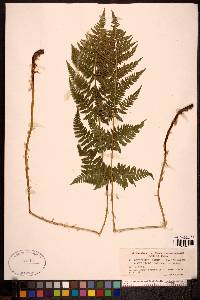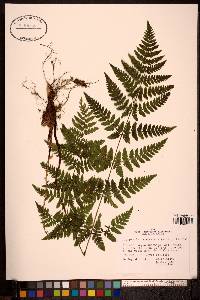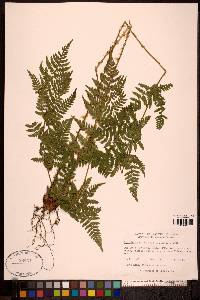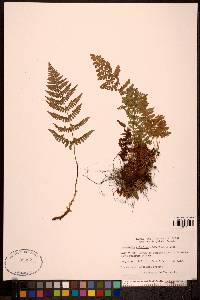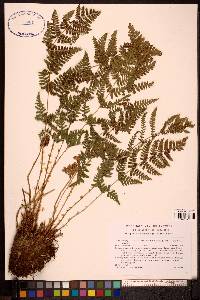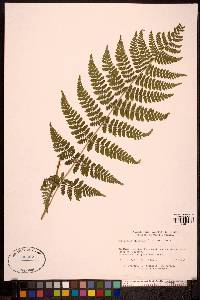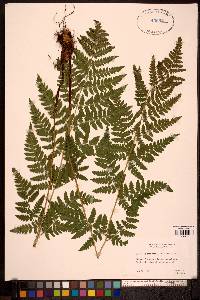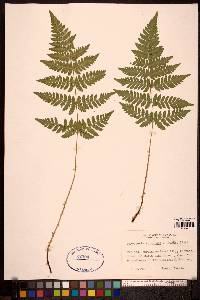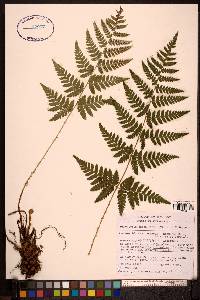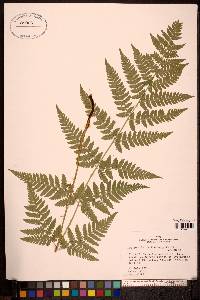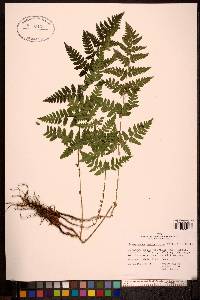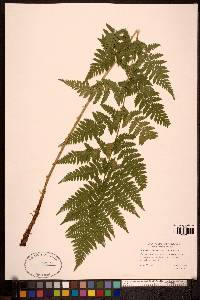Dryopteris carthusiana
|
|
|
|
Family: Dryopteridaceae
Spinulose Wood Fern, more...toothed wood fern
[Aspidium spinulosum, moreAspidium spinulosum f. anadenium B. L. Rob., Dryopteris austriaca var. spinulosa , Dryopteris spinulosa (Mueller) Watt, Dryopteris spinulosa var. americana (Fisch. ex Kunze) Fernald, Dryopteris spinulosa var. concordiana (Davenport) Eastman, Dryopteris spinulosa var. fructuosa (Gilbert) Trudell, Dryopteris spinulosa var. spinulosa] |
Leaves monomorphic, dying in winter, 15--75 × 10--30 cm. Petiole 1/4--1/3 length of leaf, scaly at least at base; scales scattered, tan. Blade light green, ovate-lanceolate, 2--3-pinnate-pinnatifid, herbaceous, not glandular. Pinnae ± in plane of blade, lance-oblong; basal pinnae lanceolate-deltate, slightly reduced, basal pinnules usually longer than adjacent pinnules, basal basiscopic pinnule longer than basal acroscopic pinnule; pinnule margins serrate, teeth spiny. Sori midway between midvein and margin of segments. Indusia lacking glands. 2 n = 164. Swampy woods, moist wooded slopes, stream banks, and conifer plantations; 0--1200 m; Alta., B.C., Man., N.B., Nfld., N.W.T., N.S., Ont., P.E.I., Que., Sask., Yukon; Ark., Conn., Del., Idaho, Ill., Ind., Iowa, Ky., Maine, Md., Mass., Mich., Minn., Mo., Mont., Nebr., N.H., N.J., N.Y., N.C., N.Dak., Ohio, Pa., R.I., S.C., Tenn., Vt., Va., Wash., W.Va., Wis.; Eurasia. Perennial fern 15 - 75 cm tall Leaves: clustered, stalked, light green, deciduous (dying back in winter), 10 - 50 cm long, 10 - 30 cm wide, widest little below middle, in outline egg-lance-shaped, but pinnately compound twice except for very tip where only deeply pinnately lobed. The main "midrib" (rachis) has a lengthwise groove along its upper surface, and while usually hairless, may sometimes have some tan scales. Rhizome: short-creeping, horizontal, scaly. Leaf stalks: up to one-third length of leaf blade, with scattered tan scales at base. Spores: 64 per sac, brownish, all of one kind, single-sectioned (monolete), oblong or kidney-shaped, and coarsely wrinkled or with folded wings. The spores give rise to the gametophyte (the sexual phase of the plant), which is small, green, heart-shaped, hairless or often with glands or hairs, and sits above the ground. Similar species: Dryopteris carthusiana is most similar to D. intermedia, but that species has glandular hairs on the lower leaf surfaces and flaps of tissue over the spore clusters (indusia), and the lowermost final leaf divisions (pinnules) of the lowest main divisions (pinnae) are shorter than the ones next to them. Also incredibly similar is the hybrid between these two species, D. x triploidea, which is very similar to, and intermediate between, both parent species, but produces misshapen spores that are infertile. Other hybrids between D. carthusiana and other species, will likewise produce infertile and misshaped spores. Our remaining species of Dryopteris differ from D. carthusiana by having leaves that are normally only pinnately divided once with the main divisions (pinnae) only further deeply pinnately lobed, not again pinnately divided, plus the final segments are not spine-toothed. Sometimes people have confused this species with Athyrium filix-femina, but that fern has its spores arranged in elongate, mostly straight clusters (sori) that are partially covered by a toothed and bristle-edged flap of tissue (indusium) that is connected along one side, not at an indented notch. Habitat and ecology: Common, even locally frequent in moist woods. Occurence in the Chicago region: native Notes: This species has been known under several names including D. spinulosa, D. austriaca var. spinulosa, and Polypodium spinulosum. The species evolved as a fertile tetraploid hybrid between D. intermedia and an unknown, ancestral, now extinct species. Several hybrids between D. carthusiana and other species occur, including D. x benedictii (cross with D. clintoniana), D. x pittsfordensis (cross with D. marginalis), D. x triploidea (cross with D. intermedia), and D. x uliginosa (cross with D. cristata). The sterile hybrids can be separated from the parent species by the presence of misshapen spores and intermediate characters in leaf morphology. Author: The Field Museum Rhizome horizontal, short-creeping; lvs deciduous, essentially glabrous except for the chaffy, concolorous pale brown scales that beset at least the lower part of the petiole and sometimes also part of the rachis; petiole mostly a quarter to a third as long as the blade; blade 2-5+ dm, a third to half as wide, broadest a little below the middle, bipinnate- pinnatifid to tripinnate, with mostly 10-15 pairs of pinnae below the pinnatifid tip; pinnae (at least the lower ones) mostly oblique, the basal pinnule of the lower side of the lowest pinna longer than the one next to it and to twice (thrice) as long as the subopposite upper pinnule; ultimate segments finely spinulose- toothed; sori midway between the midvein and the margins; 2n=164. Moist or wet woods and swamps; interruptedly circumboreal, in Amer. s. to S.C., Ark., and Wash. (D. spinulosa; D. austriaca var. s.) Gleason, Henry A. & Cronquist, Arthur J. 1991. Manual of vascular plants of northeastern United States and adjacent Canada. lxxv + 910 pp. ©The New York Botanical Garden. All rights reserved. Used by permission. From Flora of Indiana (1940) by Charles C. Deam The greater number of specimens are from the lake area where it is usually frequent in wet woods, especially about ponds, in tamarack bogs, and on the wet, wooded borders of lakes. Sometimes it is found in dry woods after the water level has been lowered. This is one of our commonest and most attractive ferns. It usually grows in clusters of from 5 to 10 fronds. ...... Indiana Coefficient of Conservatism: C = 6 Wetland Indicator Status: FACW |

